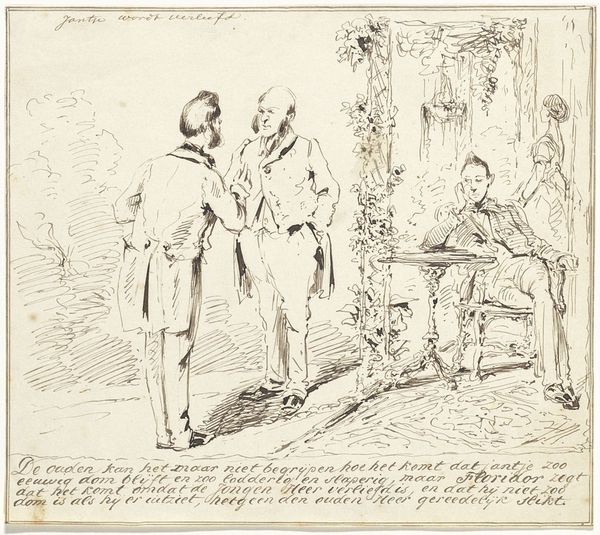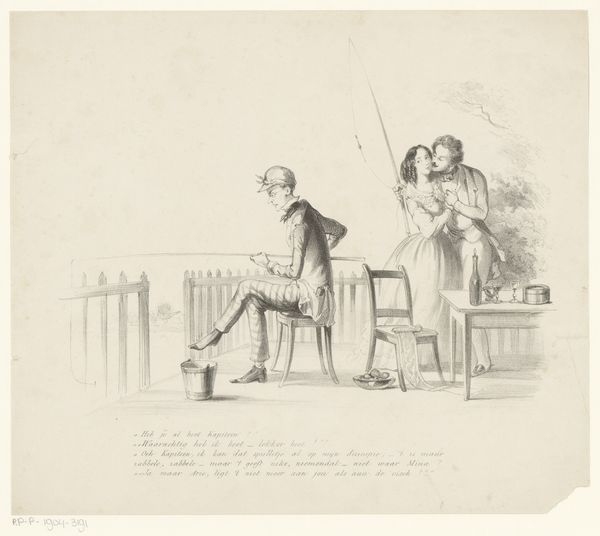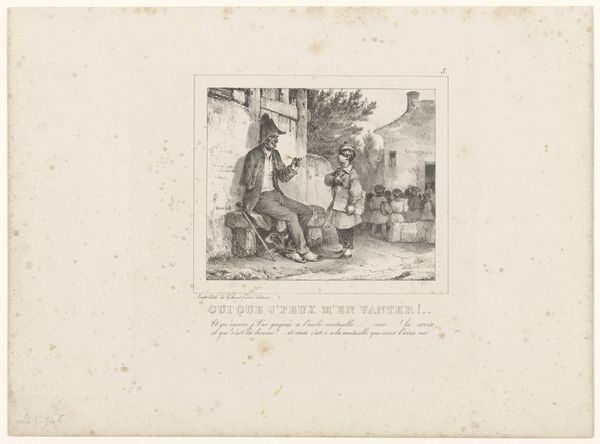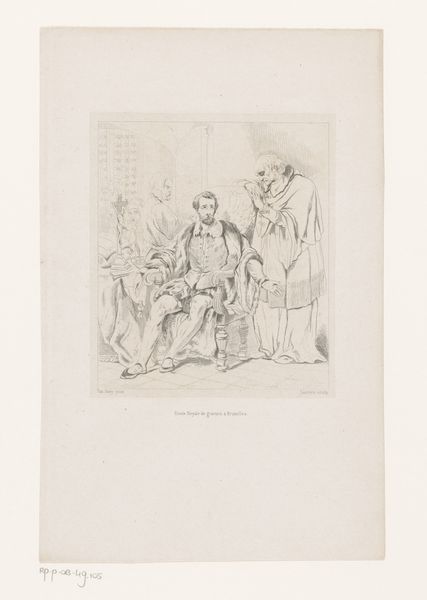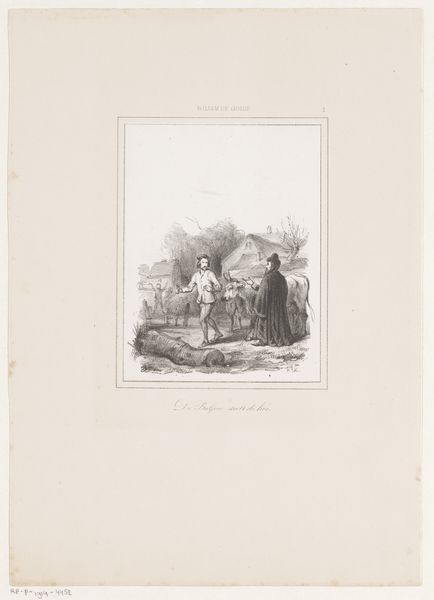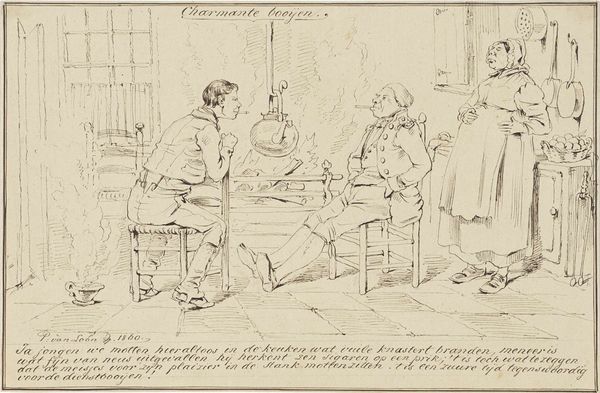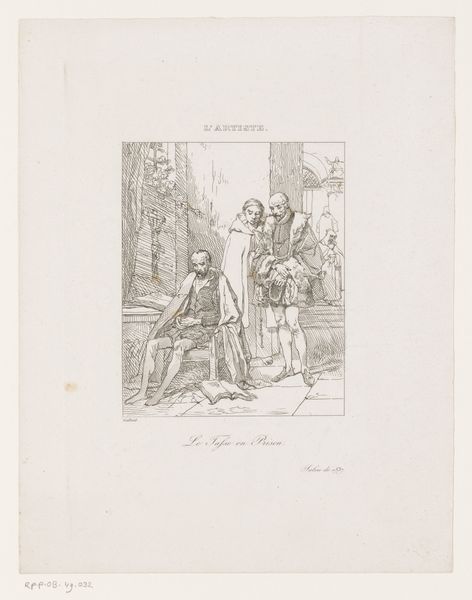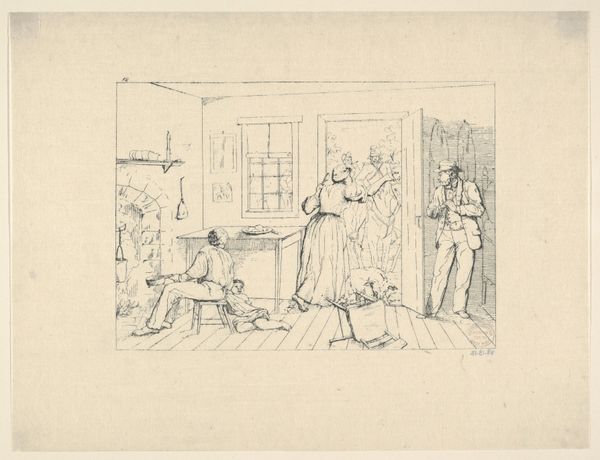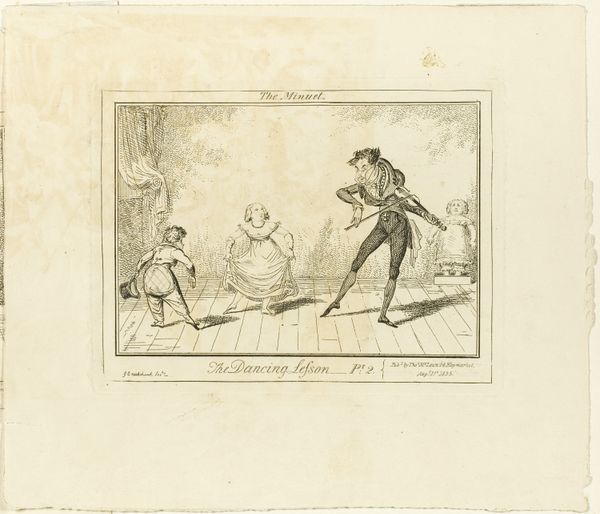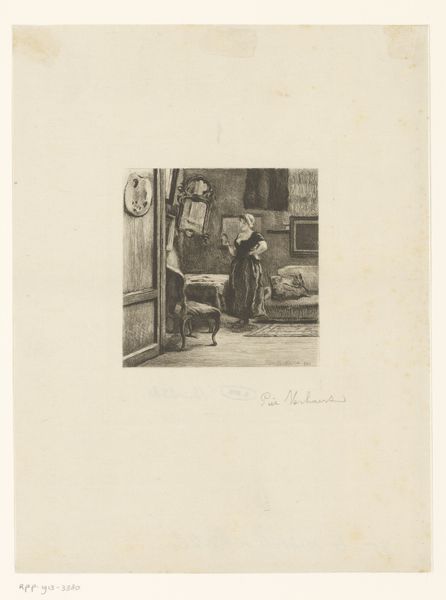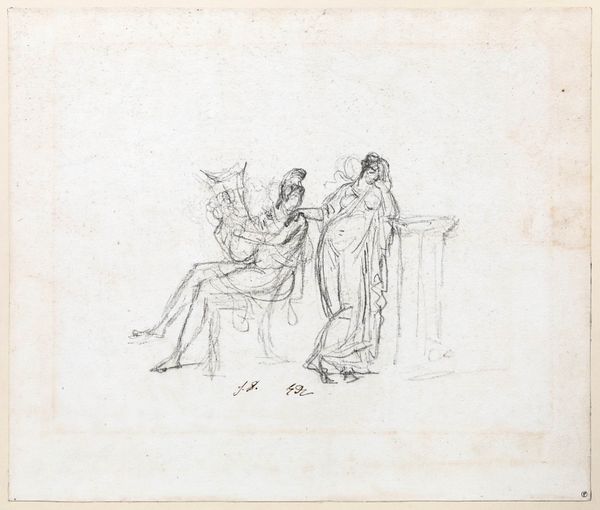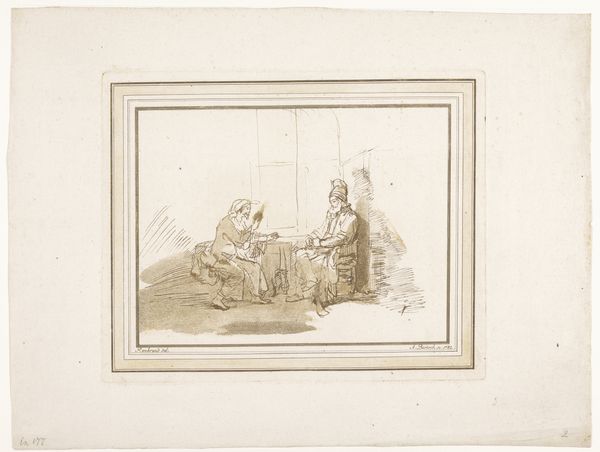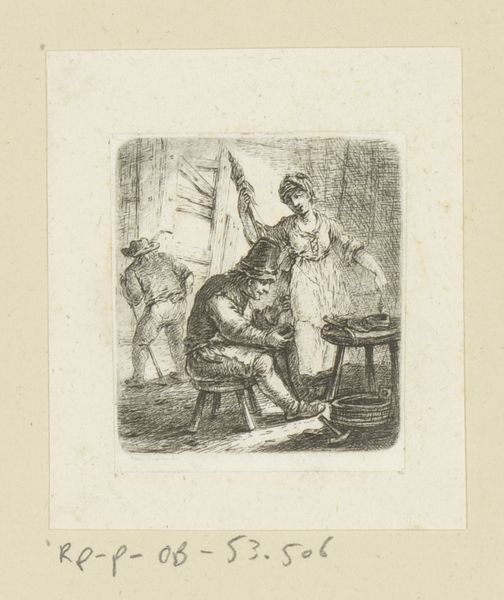
drawing, pencil
#
portrait
#
drawing
#
pencil
#
genre-painting
Dimensions: height 511 mm, width 343 mm
Copyright: Rijks Museum: Open Domain
Editor: This is "Gesprek tussen oom en neef," or "Conversation between uncle and nephew," by Alexander Ver Huell, created around 1865 or 1866. It's a pencil drawing. It seems to capture a moment of contemplation, maybe even sadness, between these two figures. What can you tell me about the social dynamics suggested by the materiality of this work? Curator: Note how the artist employed accessible and affordable materials – pencil and paper. What does this suggest about the accessibility of art-making and consumption at this time? This simple act allows the artist to democratize this intimate, emotional experience to wider audience than a commissioned portrait of a wealthy family might afford. Editor: So you're saying that by using these commonplace materials, it’s also engaging with everyday life and more available for anyone to enjoy, right? It connects to daily labor because of this directness? Curator: Precisely. The drawing's creation wasn’t necessarily reliant on patronage, allowing Ver Huell greater autonomy. Think about where art was shown at this period, art was exhibited to an audience. How do you think that effects the nature of the materials that would be selected for their artwork? Editor: I didn’t even consider how that would give him more freedom! That’s an important consideration. How were drawings received in that period? Were they valued as highly as paintings made with costly materials like oils? Curator: Good question. There’s a hierarchy to be examined here. Often, drawings such as these would function as studies, perhaps a step in a larger painting project or illustrations for published literature to then reach mass consumers. Editor: That reframes everything! It becomes a means to distribute ideas. It's no longer just the art itself but its social function to a larger society that the material conveys! I had not noticed this! Thank you for all your help. Curator: Of course, looking at the materials helps uncover broader economic and social realities embedded in the artwork! This helps me appreciate what went into it.
Comments
No comments
Be the first to comment and join the conversation on the ultimate creative platform.
